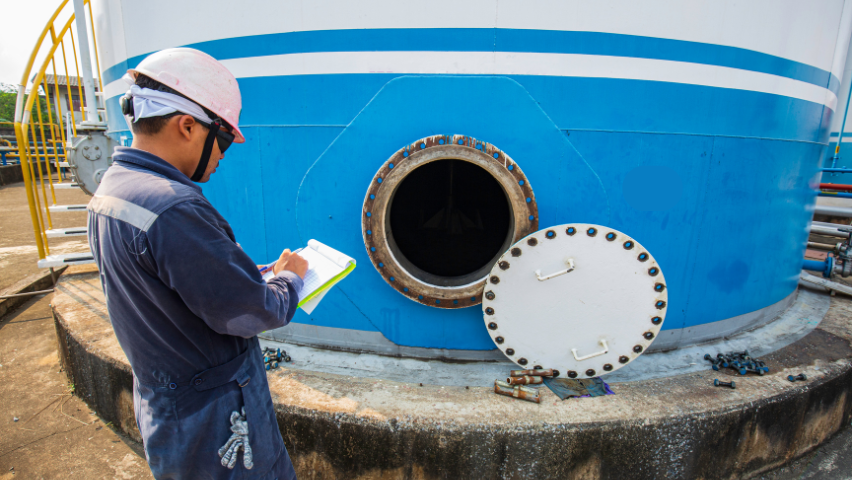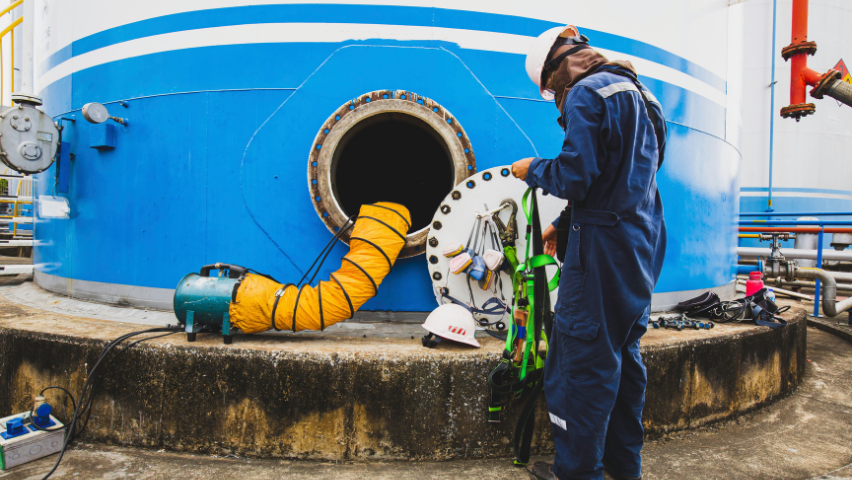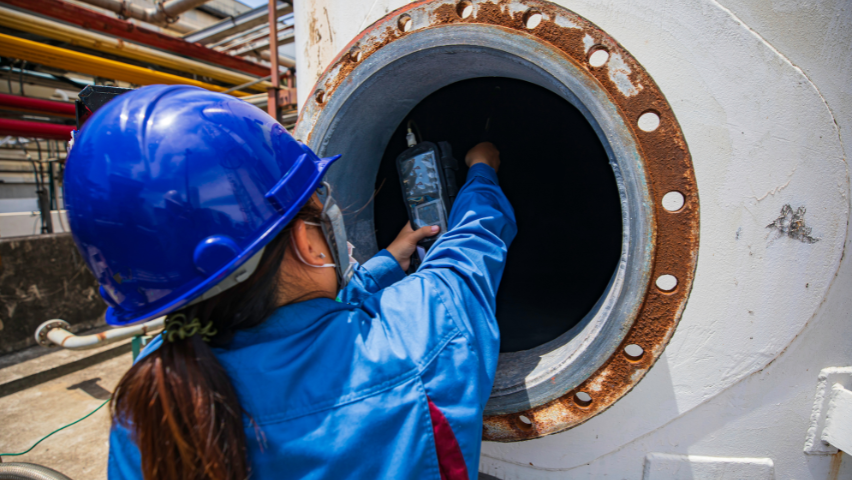
In industries where fluid storage, movement, and measurement are critical, accurate tank calibration is not optional—it is essential. Whether you’re storing fuel, water, chemicals, oil, or gas, the precise knowledge of how much is inside a tank can make the difference between profit and loss, compliance and penalty, safety and risk. Tanks—whether horizontal, vertical, fixed, or mobile—often undergo structural shifts due to temperature changes, corrosion, repairs, or simple wear and tear. These changes, though invisible to the eye, can drastically affect volumetric accuracy over time. A miscalibrated tank may appear full while actually being underfilled, or worse, lead to dangerous overfills.
This is where tank calibration services come in.
At Prism Calibration, we understand that tanks are not just storage vessels—they are crucial operational components. Through our NABL-accredited tank calibration services, we help industries achieve exactness in their inventory management, improve process control, meet legal requirements, and optimize operational efficiency. Whether it’s a diesel tank in logistics, a CNG tank in transport, a fuel tank in a petrol station, or a water tank in a manufacturing plant, even the slightest inaccuracy can have a large-scale impact. Prism Calibration ensures you never face such uncertainties. Our tank calibration process uses high-precision equipment and globally recognized methods (like the strapping or volumetric method) to generate dependable tank calibration charts and certificates. These are not only traceable but are also recognized by regulatory and legal bodies—thanks to our NABL accreditation. We serve organizations across oil & gas, pharma, chemicals, water treatment, food & beverage, and government sectors—delivering calibration that is technical, transparent, and totally tailored. Because when it comes to measurement, there’s no room for assumptions. Only accuracy. Only Prism Calibration.
Tank calibration is the process of precisely measuring and documenting the volume of liquid a tank can hold at various fill levels. This helps in converting dip measurements (height) into accurate volume data. Calibration is done for:
– Fuel tanks.
– Horizontal tanks.
– Vertical storage tanks.
– Water tanks.
– Diesel and CNG tanks.
– Oil tanks.
– Portable and fixed tanks.
Whether you store water, chemicals, petroleum products, or industrial fluids, calibration ensures you know exactly how much is in the tank at any given time.
– Accurate Inventory Management: Eliminate guesswork in fuel, chemical, or water usage with precise level-to-volume mapping.
– Regulatory Compliance: Most industries must comply with NABL, ISO, and local legal metrology standards. Regular tank level calibration supports legal documentation and audit trails..
– Cost Control: Prevent product losses due to inaccurate readings—especially in diesel, oil, or fuel tank calibration.
– Safety and Risk Reduction: Overfilling or underfilling tanks can cause spills or pressure hazards. Calibrated tanks reduce such risks.
– Quality Assurance: In sectors like food or pharma, volume accuracy directly affects product quality and compliance.

Our calibration process includes advanced equipment, trained engineers, and NABL-compliant procedures:
– Site Inspection & Preparation
We evaluate tank shape, dimensions, accessibility, and environmental conditions.
– Volumetric or Strapping Method
Strapping Method: For large tanks—uses steel tape and mathematical modeling.
Volumetric Method: Actual liquid is measured in and out using calibrated flow meters.
– Tank Calibration Chart Preparation
We prepare a certified chart that converts tank height/dip readings into accurate volume data.
At Prism Calibration, we provide calibration services across a wide array of industries, ensuring precision, compliance, and operational efficiency. Our services are tailored to meet the specific needs of the following key sectors:
We utilize cutting-edge tools and digital technology to ensure high accuracy and speed:
Laser measurement devices
Digital theodolites
Ultrasonic level sensors
Flow meters
Surveying equipment
Custom calibration software
All our tools are regularly calibrated under NABL-certified laboratories to ensure high reliability.

To maintain accuracy and compliance, it’s essential to calibrate tanks regularly:
– Annually for fuel and oil tanks.
– Every 2 years for water and chemical tanks.
– Post-maintenance or relocation.
– After structural modifications or corrosion treatment.
Our tank calibration services follow global and Indian standards like:
– ISO 7507.
– API MPMS Chapter 2.2A/B.
– NABL ISO/IEC 17025 guidelines.
Many errors occur not in tank volume but in level-to-volume conversion. Without proper tank level calibration, even high-tech sensors and gauges can report wrong quantities.
Our experts verify and recalibrate your tank-level instruments like:
– Float gauges.
– Ultrasonic sensors.
– Radar level meters.
– Pressure-based level indicators.
This dual calibration (physical tank + sensor) guarantees accurate readings on your SCADA, PLC, or control panels
– Inaccurate fuel billing at petrol stations.
– Oil theft or leakage.
– Overflow issues in water treatment plants.
– Uncertainty in chemical usage or mixing.
– Stock mismatch in manufacturing plants.
Ideally, every 12–24 months or after any structural modification, cleaning, or relocation.
Yes, especially if you need legal traceability, ISO audits, or industry compliance. NABL-accredited calibration is recognized by all regulatory bodies.
Yes. Prism Calibration provides on-site calibration for mobile tankers, bowsers, and container-based tanks.
It depends on tank size and type. Smaller tanks take a few hours; larger industrial tanks may take up to a day.
Calibration is most accurate when the tank is empty. For operational constraints, partial calibrations can be performed using advanced equipment.
